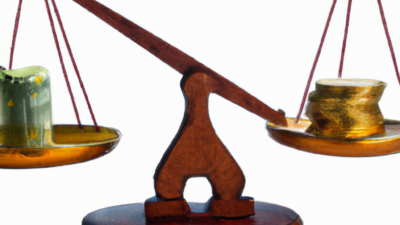In the intricate dance of economic stability, monetary policy serves as one of the central instruments wielded by governments and central banks to influence a nation's economy. Currently, many economies around the world are experiencing what experts term "tight" monetary policy. This strategic approach involves a series of measures aimed at controlling inflation, stabilizing currency, and ensuring sustainable economic growth. But why exactly is monetary policy tight at this juncture? This article delves into the multifaceted reasons behind this economic stance, exploring the underlying causes, anticipated impacts, and the delicate balance policymakers aim to achieve in their efforts to foster a resilient economic environment. From rising inflationary pressures to global economic uncertainties, we will unpack the complexities that necessitate a tighter grip on the monetary reins.
Sure, here's a suggested content outline for an article discussing why monetary policy is tight:
Monetary policy is often considered tight when a central bank, such as the Federal Reserve in the United States or the European Central Bank, adopts measures aimed at reducing the supply of money within the economy. This typically involves increasing interest rates, selling government securities, or raising reserve requirements for commercial banks. The primary objective of tight monetary policy is to curb inflation, stabilize the currency, and maintain economic stability.
One of the main reasons central banks implement tight monetary policy is to combat inflation. When the economy grows rapidly, demand for goods and services can outstrip supply, leading to higher prices. By making borrowing more expensive through higher interest rates, the central bank can reduce consumer spending and business investment. This, in turn, helps to moderate demand and bring inflation under control.
Another reason for tight monetary policy is to maintain the value of the national currency. High inflation can erode the purchasing power of money, leading to a loss of confidence among both domestic and international investors. By tightening monetary policy, central banks signal their commitment to maintaining stable prices, which can bolster confidence in the currency and attract foreign investment.
Tight monetary policy can also be used to prevent economic bubbles. When interest rates are low, borrowing is cheap, which can lead to excessive speculation in markets such as real estate or stocks. This can create asset bubbles that, if burst, can cause significant economic disruption. Raising interest rates can help to cool down overheated markets and encourage more sustainable economic growth.
However, tight monetary policy is not without its drawbacks. Higher interest rates can lead to slower economic growth, higher unemployment, and increased borrowing costs for consumers and businesses. It can also put pressure on government budgets by increasing the cost of servicing public debt. Therefore, central banks must carefully balance the need to control inflation and maintain economic stability with the potential negative impacts on economic growth and employment.
In summary, tight monetary policy is a tool used by central banks to manage inflation, stabilize the currency, and prevent economic bubbles. While it can help to maintain economic stability, it also comes with potential downsides that must be carefully managed.













